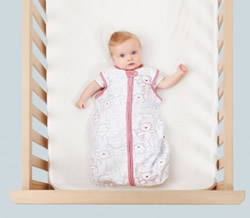 The Commissioner for Consumer Protection has said that regulators have developed a new Best Practice Guide for the design of safe infant sleeping environments.
The Commissioner for Consumer Protection has said that regulators have developed a new Best Practice Guide for the design of safe infant sleeping environments.
The Commissioner, Gary Newcombe said babies could spend up to 17 hours a day sleeping so it was crucial to ensure the place where they spent all this time resting was as safe as possible.
“Developed to help industry, the Guide highlights essential considerations for designing, marketing and supplying safe infant sleep products, and includes a checklist that can be used to identify product use and hazards,” Mr Newcombe said.
“As we help share the messaging from this important Guide with industry, it’s timely to remind parents and carers of infants to ensure their own practices at home are safe.”
He said Red Nose, the charity that aimed to eradicate Sudden Infant Death Syndrome (SIDS), recommended babies sleep on their back on a firm and flat surface in a safety-compliant cot that did not contain blankets, toys, pillows or bumpers.
“It is important to keep cots away from hanging cords, such as those on blinds, curtains or electrical appliances, as they could get caught around a baby’s neck,” Mr Newcombe said.
“Although infants may fall asleep for long periods in car seats, swings or bouncers, they should always be monitored to ensure their heads haven’t fallen forwards, as this may push the chin down towards the chest, leading to the airway becoming blocked.”
He said that if someone was using a baby sling, the baby’s face should be visible at all times, not snuggled against fabric or the wearer’s body.
“Other sleep hazards for infants can include being left unattended on an adult bed or bunk bed; being placed on a beanbag, couch, pillow or cushion; being left with a sleeping adult or child on a bed, couch or chair, and exposure to second-hand smoke,” Mr Newcombe said.


